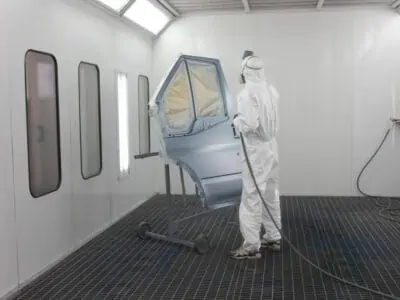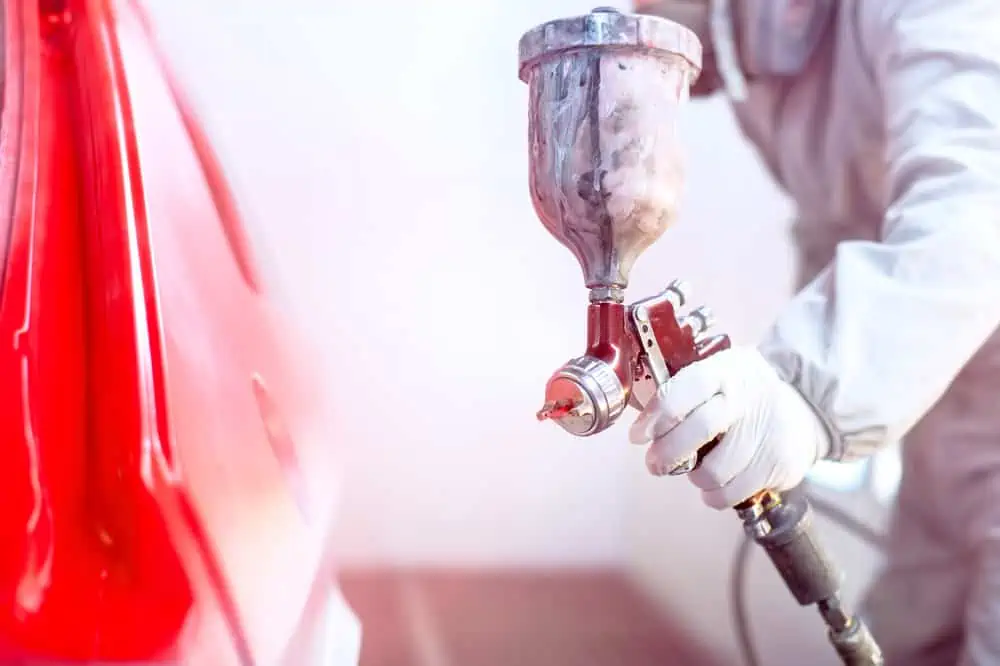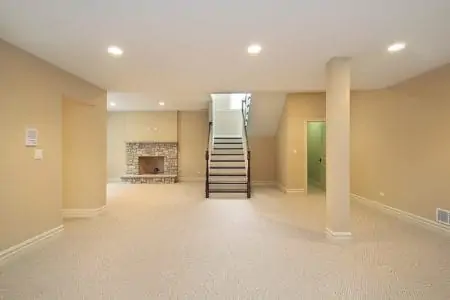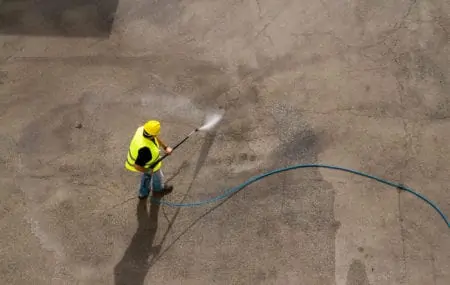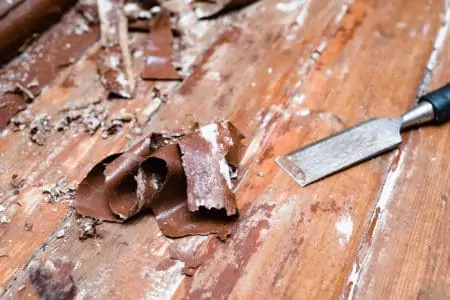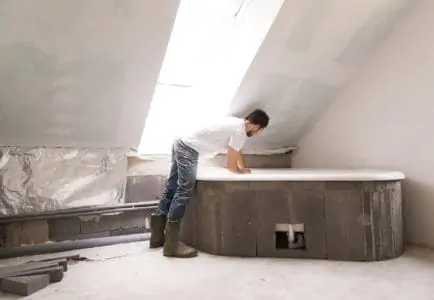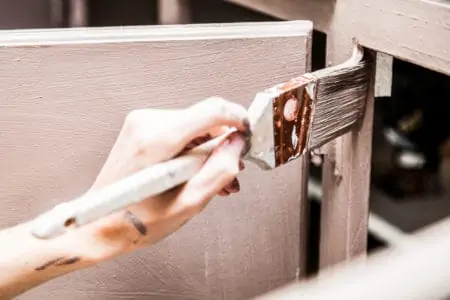Repainting a car can be expensive, especially when you account for auto paint shop labor costs. Sometimes, the cheapest policy is to do the work yourself. You might not achieve the same perfect results, but you save a packet on costs.
So, how much does it cost to repaint a car door? Let’s take a look and examine the factors that affect the price.
Key Takeaways
- DIY car door repainting costs between $300 to $400, while hiring a pro can cost up to $1,200.
- Key factors affecting the cost include size of the panel, type of paint, repairs needed, and paint colors.
- DIY repainting can save on labor costs, but professional work ensures a high-quality finish.
- Repainting a car door involves sanding, priming, applying topcoat, and adding a clear coat, with drying times in between.
How Much Does it Cost to Paint a Car Door?
On average, you can spend between $300 and $1,200 on your new car door respray, depending on the make, model, and paint needed.
However, these figures include professional rates, so if you do the work yourself, you remove the expensive labor costs. It could reduce the price by 35 to 50 percent.
Car Paint Job Cost Estimator
Working out the price of your paint job depends on whether you get it done professionally or take the DIY approach. The average auto shop will charge rates between 35 and 50 percent. So, if they quote you $1,200, $600 could be for labor alone!
To calculate the overall costs of painting a car door yourself, you need to factor in the following:
Sandpaper
You will need different grades of sandpaper to complete the task properly. Start with 60-grit and move on to 1200-grit.
Estimated cost: $30.
Spray Paint Machine
This is probably your single most significant outlay. Don’t be tempted to cut corners and buy the cheapest machine. The outcome of your paint job depends on this sprayer doing a good job.
This Graco Magnum is costly but popular and gets excellent reviews.
Estimated cost: $230.
Safety Gear
You cannot put a price on safety. That said, we are going to do just that! You will need a respirator with filters, safety goggles, and even a Hazmat suit (think CSI Miami).
Estimated cost: $35.
Body Filler
Car body filler is not as cheap as other fillers. The costs vary depending on the amount of filler you need and the brand. This 3M Platinum Plus is one of the most popular brands available, and you can buy it online or from your local hardware store.
You will also need a putty knife to apply the filler, but they are cheap to purchase. This Red Devil knife is a great example and costs less than $6.
Estimated cost: $75.
Sundries
You will also need a few sundry supplies, like drop cloths and masking tape. You can choose between plastic sheeting, which is cheaper, or canvas cloths like this Chicago Canvas drop cloth. Again, we are not talking about earth-shattering costs here.
Your masking tape costs vary depending on the amount you use. You should only need one roll for a car door, like this Scotch tape.
Estimated cost: $25.
Factors Affecting Paint Job Costs
Several variables affect the final bill. From an SUV, minivan, truck, or standard family car, the paint you use, the color, and the panel sizes change the price.
Size of the Panel
SUV car doors are larger than other car doors, so it stands to reason that they will cost you more. Also, you might only need to repair a quarter panel rather than the entire door, although that will require expert blending skills.
Sometimes the amount of painting is beyond your control. If your car is in for repair after an accident, the insurance company will dictate the job size. It might be that the auto shop has to paint the doors, car hood, and other sections of your vehicle.
Type of Paint
Car paints are all the same, right? After all, paint is paint. Wrong!
Luxury cars use premium paints with higher pigment and binder levels. This makes them look good for longer and keeps them standing out from the crowd.
Some classic cars have custom paint or colors that are no longer in production. To match the paintwork, you (or the pro) will have to source the materials and expertly mix the colors.
Whenever you say “custom,” you can start adding dollars to the price tag.
Repairs
The level of repairs depends on the prep work needed. When you start stripping the old paint, you might uncover extensive rust. You can’t paint straight onto old rust, so you need to treat it, which ups the cost.
Some scratches are deeper than others, requiring you to remove several layers of paint. Other scratches are light and can be buffed out with minimal effort.
There is always a cost associated with extensive prep work, but your spending increases when you add in scratches and rust.
Paint Colors
Custom (there’s that word again!) colors cost more because they are not off-the-shelf. They have to be expertly blended to match the original color. Some colors have additives like glitter and pearlescent effects that ramp up the price.
Standard cars use standard paints that are readily available at a lower price, but expensive cars use specialist paints. It doesn’t take a genius to work out that Ferrari paint costs more than Ford paint.
DIY Vs. Hiring a Professional
Doing the work yourself is time-consuming and complicated, especially for novices. The bonus is that you save on professional labor rates. Expect to pay about $400, including the price of the paint sprayer and other materials.
Because you are doing the work, there is no labor to add on, which is a significant saving.
Getting the pros involved is convenient and easy, but you pay through the nose for their services. However, it’s not just about the price of paint and materials. You are calling on years of expertise to get the best finish.
Expect to pay anything from $400 to $700 for a standard car door and up to $1,200 for larger vehicles. In some cases, half that cost consists of labor charges.
There are instances when you have no choice but to take your car to the dealership or auto shop. If you’ve had a collision, your insurance company will insist on a professional repair and respray.
When your insurance company asks for the dealership to carry out the work, there is no cost to you other than the excess charged on your policy. You will need to check the small print on your policy to determine how much you need to pay.
How to Repaint a Car Door Yourself
Repainting a car door is not for the faint-hearted. The good news is that you can learn on the job, make mistakes (and correct them), and feel pride in your achievements.
Start by sanding back the door using 600-grit sandpaper. Remove all rust spots and orange peel paint, so the surface is smooth. Spray on the primer, working left to right in sweeping motions.
This Zinsser 1-2-3 primer is an excellent choice because it covers most surfaces and is easy to work with.
Top Tip
Remember to switch to 1200-grit sandpaper and sand between layers for the smoothest results.
Lay down at least two to three layers of primer, and wait 24 hours while it dries. Apply the topcoat, holding the can at least 25cm from the car door. Work in the same sweeping motions as before and sand between coats.
Wait 24 hours for the topcoat to dry before applying a clear coat. This Krylon Clear Coat is one of the most popular products and offers UV protection.
When to Repaint the Entire Car
If the damage is limited to one section of your car, respray that area only. You will need to color-match so that your repainted hood or door doesn’t stand out.
However, if the damage extends to other parts of the vehicle, it may be better to respray the entire car. That way, the color looks uniform, and all the repairs get fixed.
Insurance companies may insist on a total respray, especially if the car has been involved in a collision and has several damaged panels. It is also worth respraying the entire car if you change the color or can’t find the right shade to match the color.
This is a common problem when dealing with classic cars where the paint is discontinued.
FAQs
Car Door Paint Perfection
The next time someone asks, “how much to paint a car door?” you can give them the rundown of the costs. You can tell them that the most significant expense is the cost of professional labor, so it makes sense to do the work yourself.
But only undertake this task if you are confident in your abilities and have completed the necessary preparation work.
